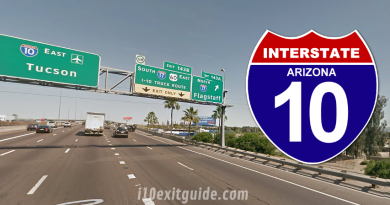I-10 Sidetrips: Florida’s Big Bend Scenic Byway
Florida’s Big Bend Scenic Byway consists of two corridors, the Forest Trail and the Coastal Trail.
Back in the 1800s the Forest Trail was truly the “Wild West,” with cowboys, rustlers, Indians, trappers, and hard-scrabble farmers. Start the day walking through a pioneer farm and stop later at Fort Braden, a military outpost during the Second Seminole War. See rolling sand hills and hardwood forests give way to extensive stretches of pine forests, wetlands, and river floodplains. Come to the Apalachicola National Forest, which features the best remaining example of a native Longleaf Pine and Wiregrass ecosystem in the United States, as well as the largest population of the endangered Red-Cockaded Woodpecker. See the mysterious Dwarf Cypress Dome, where trees over 300 years old are only 6-15 feet tall.
The Coastal Trail was first discovered in 1528 by Panfilo de Narvaez and was occupied by Spanish, English, American, and Confederate forces. In the 1800s, the rivers were full of ships with cotton and timber bound for foreign markets. Later they were replaced by sponge, shrimp, crab, oyster, and fishing boats, which still ply these waters. This rich heritage beckons you to explore barrier islands, sand dunes, beaches, bays, coastal marshes, and springs of the Coastal Trail. Visit the Edward Ball Wakulla Springs State Park, one of the world’s largest and deepest fresh water springs. If geology is of interest to you, the interpretive trail at Leon Sinks Geological Site is a must. Created over millions of years, its Karst Topography of mysterious underground caverns and magical subterranean lakes make this site of global scientific interest.
Coastal Trail Section
To travel the Coastal Trail, begin on Market Street in Apalachicola at Scipio Creek Marina.
– Continue along Market Street to US 98/SR30/Avenue E in Apalachicola.
– Go to US 98/SR 30 (John Gorrie Memorial Bridge).
– Go to CR 65 in Eastpoint.
– On CR 65 (South Bayshore Drive), go southbound to SR 300.
– On SR 300 (Island Drive) go eastbound on CR 300 (East Gorrie Drive) from SR 300 to the entrance of Dr. Julian G. Bruce St. George Island State Park.
– Continue southbound on SR 300 to the east boundary of the state park.
– Return northbound along SR 300 from CR 65 to Patton Drive.
– On Patton Drive, go to US 98/US 319/SR 30.
– Go to SR 30-A in Carrabelle.
– On CR 30-A (Gulf Avenue) go from US 98/US 319/Sr 30 to US 319/SR 377 (Sopchoppy Highway).
– Go through the Franklin/Wakulla County Line, through Panacea, past US 319/SR 375, past US 319/SR 61, to SR 363.
Forest Trail Section
The Forest Trail section of the byway begins on SR 65 (James Gadsden highway) at US 98/US 319/SR 30 and goes to the Apalachicola National Forest Boundary.
– Go along SR 65 and come to the Franklin/Liberty County Line.
– Continue along the Sopchoppy Highway from the line to CR 299 (Curtis Mills Road).
– Travel from US 319/SR 377 to CR 22. Along CR 22 (Rose Street) go from CR 299 to CR 375 in Sopchoppy.
– On CR 375 go form the CR 22/CR 375 intersection to Winthrop Street, then go northbound on CR 375.
– From the Wakulla/Leon County Line, go eastbound along SR 20 and go to SR 263.
– Go to SR 267 at US 98/SR 30 and go to CR 373.
– From there, go back to the Wakulla/Leon County Line and travel along Springhill Road to SR 263 (Capital Circle).
– End at SR 20 (Blountstown Highway).
The post I-10 Sidetrips: Florida’s Big Bend Scenic Byway appeared first on I-10 Exit Guide.
From: I-10 Featured


